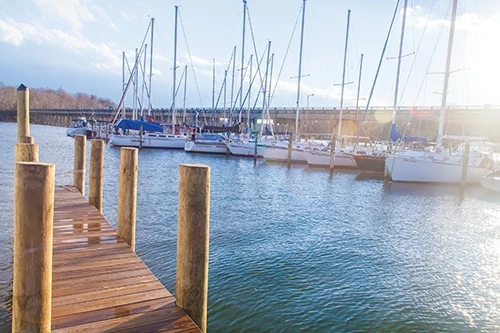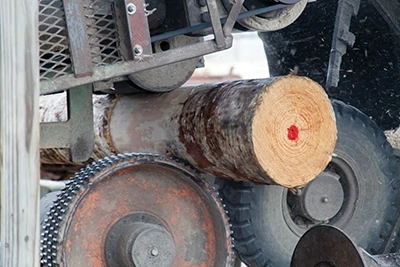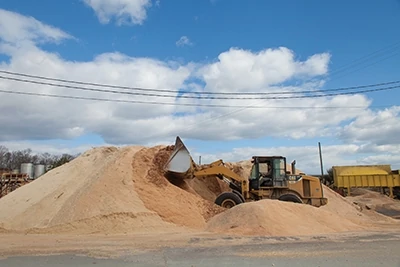Today’s treated wood is harvested more responsibly than ever.
By Belinda Remley
Wood products are everywhere. And it’s no wonder. Wood is, after all, nature’s sustainable building block—a renewable resource that has excellent workability, whether a project is as simple as a backyard creation or as complicated as a mid-rise building.
But where do wood products come from and does the manufacture of wood products deplete this precious natural resource? According to data from the USDA Forest Service, United States forestland is roughly as abundant today as it was 100 years ago. According to the USDA Facts and Trends from 2012, a third of the United States is covered in forests and of those forests nearly 60 percent are privately owned, managed forest lands. The wood from these forests is used for everything from building materials to paper and mulch.
The wood preserving industry, one of the many that uses this abundant natural resource, takes very seriously its responsibility to ensure the future of our forests by sourcing from sawmills that use trees from managed forest lands. Some treaters even take this stewardship role a step further, using every part of the tree that comes into their facility.
“We are creating a sustainable product from a renewable resource,” says Sam Snead, plant manager for Wood Preservers Inc., a wood preserving company located in Warsaw, Virginia. “Not only are we providing a valuable commodity for both residential and industrial consumers, we are doing it responsibly.”
Wood Preservers is nestled in historic Virginia and has been providing wood products regionally for more than half a century. Owner Morgan Wright says his employees understand the need to care for forests in their community by using an approach of accountability in every step of the process. “We play our part in creating a harmonized chain of production from tree to utility pole or marine piling or lumber.”
For Wood Preservers, the production process begins long before the lumber gets placed onto trams and pushed into a wood-treating cylinder. It starts in the forest with a partnership with local landowners to help manage their forests. The process moves from forest to treating plant as trees are harvested and prepared for treatment. Finally, the prepared piling, lumber, poles, etc. are preserved during the treatment process for long-lasting protection from termites, marine organisms and fungal decay.
Harvest & Grow
As a part of their forestry management, Wood Preservers helps nurture trees from seedling to harvestable 30-year-old mature pine. There is a reason the forests are referred to as managed. Brad Croxton, professional forester who has worked with Wood Preservers for more than 25 years, explains that maintaining that partnership with private landowners is very important to Wood Preservers and the community, since the treatment company actually maintains the private property with the intention to harvest the trees planted on it. “Because of our vested interest in the land,” says Brad, “we consider ourselves custodians of the forests.”
Much like with crops such as corn or wheat, trees are planted and cared for until they are ready to be harvested. The process of growing a forest begins for Wood Preservers during the months of January through March when they plant seedlings on privately owned forest land that has previously been harvested. Seedlings are planted at the rate of 400 per acre. The southern yellow pine trees (specifically loblolly in the Virginia area) grow alongside underbrush and hardwoods for about 18 to 20 years.
“Unlike other species, pine trees need sun to grow,” says Brad. “So as a tract of forest celebrates its 18th through 20th anniversary, we make plans to do a thinning. This means that we go in and clean out the forest, leaving about 150 trees per acre. We take what we have thinned and either use it to make building products or we send it as wood chips to be manufactured into paper products.”
The remaining trees continue to grow until they are 30 years or older when they are finally harvested. During the growth process, trees improve air quality by removing carbon dioxide from the atmosphere. “As we harvest our pine trees,” says Brad, “we also harvest the hardwoods, which are sold to other manufacturers for appropriate uses. Our goal is to use absolutely everything we take out of the ground.” All of the material is put into piles as it is harvested by a giant machine called a skidder. Piece by piece the trees are merchandized by sorting into piles based upon sizes appropriate for various end uses.
After weeks of harvesting, what is left is an empty tract of land that will sit void of any plantings for less than a year. As with land used for other crops, the soil will rest and then be replanted with another crop of trees. The “unmerchantable” clippings and underbrush that have been cut along with the trees serves as a composting blanket on the tract of land to enrich the soil, and thus avoid the use of fertilizers.
“Some people call it clear cutting,” says Brad. “However, what we do is harvest the land and replace what we have taken. We will nurture our crop of trees the way a cotton or soy farmer nurtures his crop.” He adds, if the forest was not used for growing and harvesting trees, it might be used for a different crop or cut down completely to make way for building growth.
Brad explains that as responsible forest managers, Wood Preservers follows strict guidelines set up by the Commonwealth of Virginia as well as the private landowners. “For example, if a tract of land has a stream or other body of water, trees around the water are flagged and will remain uncut. This protects and maintains the quality of surface water that ultimately feeds the Chesapeake Bay.”
He further says that during the growing process, the privately owned land is home to wildlife and used by birdwatchers, hikers, hunters and fishermen. “There are always tracts of land in different stages of development. It is important to maintain the beauty of the natural landscape during the growth cycle and always have forests to be enjoyed.”
Ready for Treatment
Once the trees have left the forest they arrive at the manufacturing plant to be debarked, planed, cut, dried and treated for use as building materials. Each tree is carefully reviewed to determine its most efficient use – should it be a pole, piling, timber or lumber? Once the end use has been chosen for the trees, they are cut and readied for treatment. Wood Preservers operates five treating cylinders nearly 24 hours a day, treating with a variety of Arxada Wood Protection’s preservatives. Just as with every other segment of the process, Wood Preservers recycles and reuses during treatment. Wood is placed on dedicated rail systems and is moved into the cylinders where it is treated using a vacuum/pressure system that forces preservative into the wood. The preservative that does not penetrate the wood is drained back into work tanks to be used in another treating cycle. After the treating process, the preserved wood is removed from the treatment cylinders to sit on drip pads where any excess preservative is collected to be recycled back into the treatment process.
Although Sam says that things are different in the treating business than when he first started his career with Wood Preservers almost 30 years ago, the overall process remains the same. He explains that even though the preservatives have changed, Wood Preservers’ commitment to excellence has not wavered. “As an example,” Sam says, “our fixation chamber, a unique manufacturing process, helps to ensure the preservative does not leach from our Wolmanized® CCA-treated wood. This gives peace of mind, especially to dock builders and contractors, because much of our Wolmanized Heavy Duty™ CCA-treated piling is used in contact with marine life when used in the water.”
During each stage of the process from cutting the trees to creating a marketable product, the byproducts are saved to be used for alternative purposes.
“Nothing goes to waste,” says Morgan. “For example, the tree bark is removed and uniquely processed to pine bark mulch. There is a specific time of year that the market for mulch is in high demand. During that time we provide it to area landscaping companies and nurseries, as well as home improvement centers.” Other parts of the tree that will not be used in the treatment process are ground up and sent to paper mills, or used as animal bedding for farmers.
Wood Preservers carries the cradle-to-cradle mantra through to their treating facility. “We use sawdust to fuel our kiln, which creates the steam used to dry our wood, to mix with our Dricon® fire retardant, and in our fixation chamber,” says Morgan. “We are the only company that I know of in the United States who uses a fixation chamber to lock the Wolmanac® CCA preservative into the wood, making it very leach resistant.”
The process continues every day in managed forest lands, sawmills and treating plants around the country and throughout the world. Forests are harvested with a purpose for every part of the trees removed. Poles, piling, dimensional lumber and more are cut and/or preserved to be reliable, strong, beautiful products. “You know,” Brad says, “there is a huge demand for wood in the United States. There always has been. We need this natural resource for so many things because it is flexible and easy to work with. And, with preservative treatment, wood has a long lifespan protected from termites and fungal decay.
“We use wood every day, everywhere, whether we realize it or not. Because of its sustainability, wood will continue to be desired worldwide for many different applications. And, now we have more properly managed forests than ever in our country’s history. That way, my children and my children’s children can build with wood and will also enjoy the beauty of this harvest as we have done.”
Editor’s note: Belinda Remley has been promoting the wood industry for more than 23 years. She is a Marketing Communications Specialist with Arxada, a leader in wood preservation.







